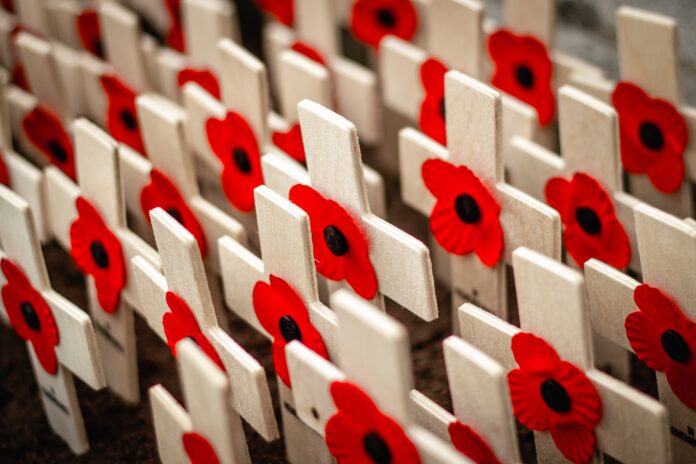Armistice Day, also known as Remembrance Day or Veterans Day in different countries, is a significant observance held annually on November 11th. This commemorative day marks the armistice signed between the Allies and Germany, effectively ending World War I. Armistice Day is a time to honor and remember the sacrifices made by military personnel during the war and subsequent conflicts. It serves as a poignant reminder of the devastating consequences of war and the importance of striving for peace. Throughout the years, Armistice Day has evolved and taken on different meanings in various parts of the world.
Armistice Day is rooted in the armistice agreement signed between Germany and the Allies, which took effect on the 11th hour of the 11th day of the 11th month in 1918. This agreement signaled the end of hostilities on the Western Front of World War I, one of the deadliest and most destructive conflicts in human history. The first Armistice Day was celebrated on November 11th, 1919, to commemorate the first anniversary of the armistice. The day was initially focused on honoring the soldiers who fought and died in World War I.
In the United States, Armistice Day was officially recognized as a national holiday in 1938. However, after World War II and the Korean War, which both required the mobilization of American troops, the scope of the day expanded. In 1954, the name was changed to Veterans Day to honor all military veterans, past and present, who have served in the United States Armed Forces. Veterans Day continues to be observed on November 11th and is an occasion to express gratitude for the service and sacrifice of veterans.
In the United Kingdom and many other Commonwealth countries, November 11th is known as Remembrance Day. This day serves as a tribute to the members of the armed forces who lost their lives in service to their countries. Remembrance Day ceremonies often involve the wearing of red poppies, which became a symbol of remembrance after the publication of the famous war poem “In Flanders Fields” by Lieutenant Colonel John McCrae.
Here are five important aspects and themes associated with Armistice Day:
1. Commemoration of Fallen Soldiers: Armistice Day provides an opportunity to honor the soldiers who made the ultimate sacrifice during World War I and subsequent conflicts. It serves as a solemn reminder of the lives lost and the immense human cost of war. Through ceremonies, wreath-laying, and moments of silence, people pay their respects to the fallen heroes and express gratitude for their service.
2. Reflection on the Horrors of War: Armistice Day prompts deep reflection on the horrors and devastation caused by war. It encourages individuals and communities to confront the realities of conflict, acknowledging the profound impact on individuals, families, and societies. The day emphasizes the importance of learning from history and working towards peaceful resolutions to conflicts.
3. Promotion of Peace: Armistice Day is closely associated with the desire for lasting peace. It calls for the pursuit of diplomatic solutions to international disputes, the rejection of violence as a means of resolving conflicts, and the fostering of understanding and cooperation among nations. Many peace organizations and initiatives are active during this period, advocating for peaceful resolutions and disarmament.
4. Recognition of Veterans: Armistice Day, particularly in countries where it is celebrated as Veterans Day, acknowledges and honors the contributions of military veterans. It serves as an occasion to express gratitude to those who have served in the armed forces, acknowledging their courage, sacrifice, and dedication. Veterans Day often includes parades, military displays, and public ceremonies to recognize the contributions of veterans.
5. Symbolism and Remembrance: Armistice Day is rich in symbolism, with various traditions and rituals associated with the observance. Red poppies, as mentioned earlier, are worn as symbols of remembrance and are often sold as a means of fundraising for veterans’ organizations. Ceremonies typically involve the sounding of the Last Post, a bugle call played at military funerals, as well as the observation of a two-minute silence to honor the fallen.
Armistice Day, also known as Remembrance Day or Veterans Day, is a significant annual observance commemorating the armistice signed between the Allies and Germany, marking the end of World War I. It serves as a time for reflection on the horrors of war, the commemoration of fallen soldiers, the promotion of peace, the recognition of veterans, and the symbolism of remembrance. Armistice Day reminds us of the immense sacrifices made by military personnel and the ongoing importance of striving for peace in a world scarred by conflict.
Armistice Day is observed in various ways around the world, with ceremonies, parades, and public events held to mark the occasion. One of the most poignant aspects of the day is the commemoration of fallen soldiers. Through solemn ceremonies and wreath-laying at war memorials and cemeteries, people pay their respects to those who made the ultimate sacrifice. The act of remembrance helps to ensure that the memory of these brave individuals lives on and that their contributions are never forgotten.
In addition to honoring the fallen, Armistice Day prompts deep reflection on the horrors of war. It serves as a somber reminder of the unimaginable suffering, destruction, and loss caused by armed conflicts. The day provides an opportunity for individuals and communities to confront the realities of war and acknowledge the long-lasting impact it has on individuals, families, and societies. By reflecting on the past, we can better understand the importance of preventing future conflicts and promoting peaceful resolutions.
The promotion of peace is a central theme of Armistice Day. It emphasizes the need for diplomatic solutions to international disputes and the rejection of violence as a means of resolving conflicts. Organizations and initiatives dedicated to peace and disarmament often play an active role during this period, advocating for peaceful resolutions, dialogue, and understanding among nations. Armistice Day serves as a call to action to work towards a world where conflicts can be resolved through negotiation and cooperation, rather than through the devastating consequences of war.
Another significant aspect of Armistice Day, particularly in countries where it is celebrated as Veterans Day, is the recognition of veterans. The day provides an opportunity to express gratitude to those who have served in the armed forces, acknowledging their courage, sacrifice, and dedication. Parades and military displays often take place to honor veterans and their contributions to their countries. It is a time to thank them for their service and to support their well-being and integration into civilian life.
Symbolism and remembrance are deeply intertwined with Armistice Day. The red poppy, inspired by the poem “In Flanders Fields,” has become an enduring symbol of remembrance. People wear poppies as a visible sign of respect and to support veterans’ organizations. The observance often includes the sounding of the Last Post, a bugle call traditionally played at military funerals, which adds to the solemnity of the day. The observation of a two-minute silence, during which people pause to reflect and remember, further reinforces the importance of remembrance and honoring the fallen.
In conclusion, Armistice Day is a day of remembrance, reflection, and gratitude. It serves as a reminder of the sacrifices made by soldiers and the devastating impact of war. The observance promotes the pursuit of peace, recognizes the contributions of veterans, and is filled with symbolism and acts of remembrance. Armistice Day holds significant meaning for people around the world and continues to be a time to honor those who have served, to strive for peace, and to ensure that the lessons learned from the past shape a more peaceful future.






















